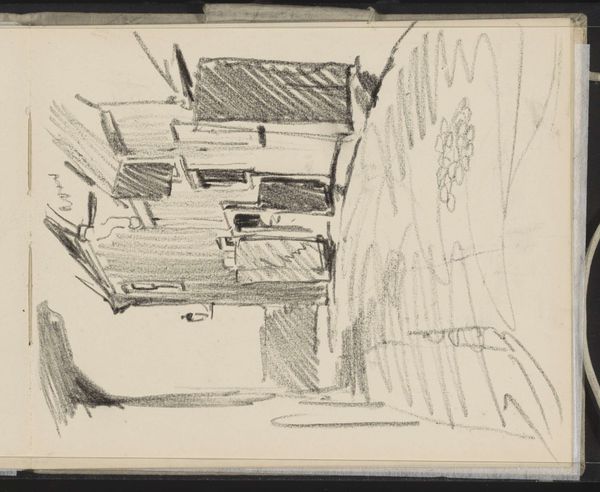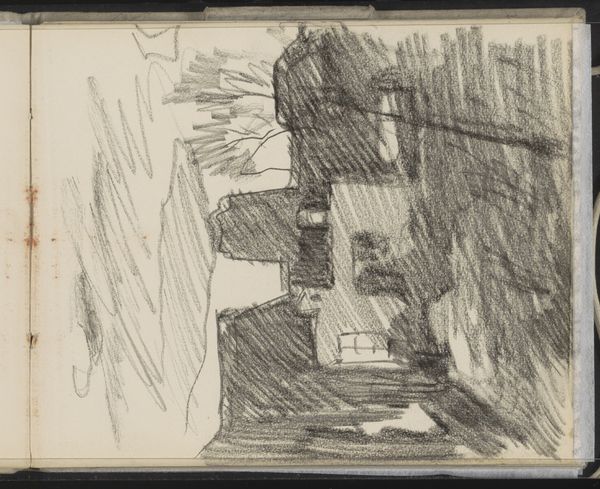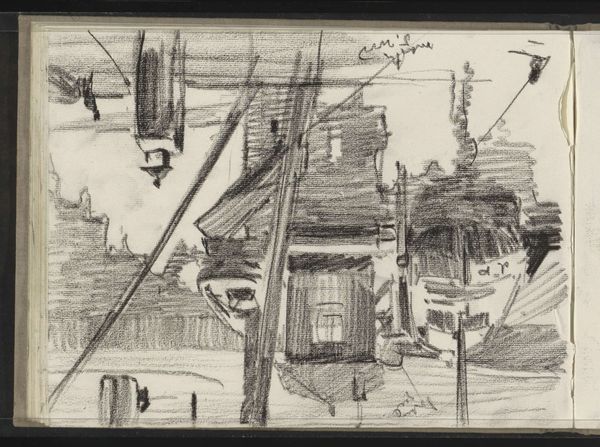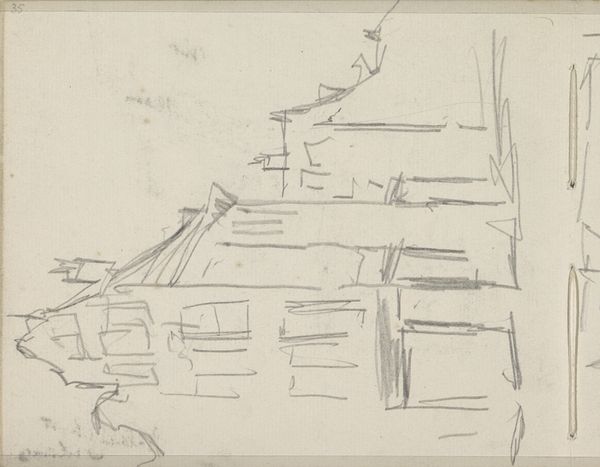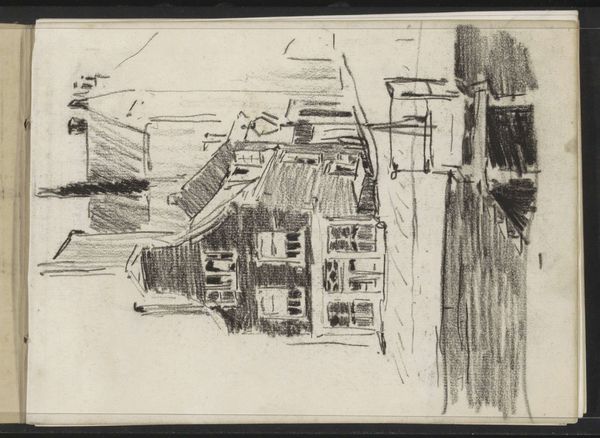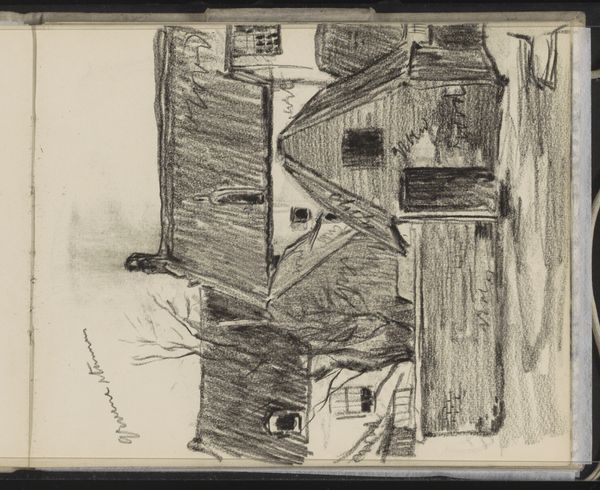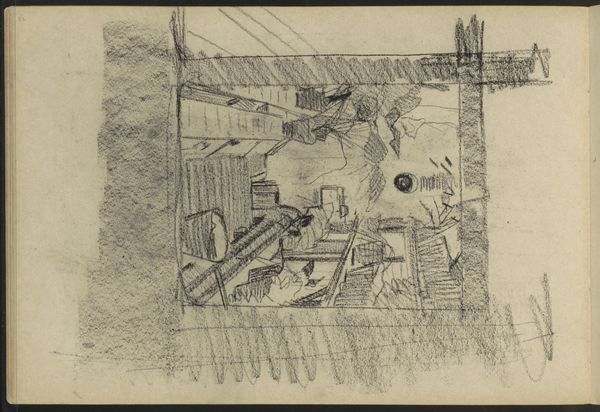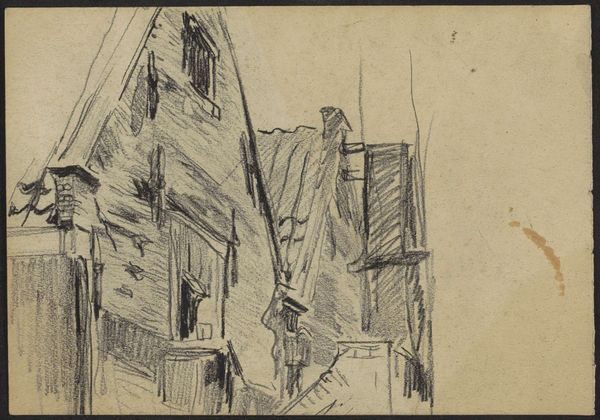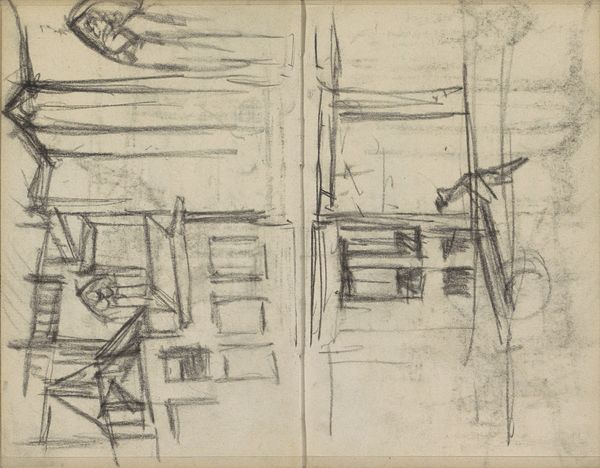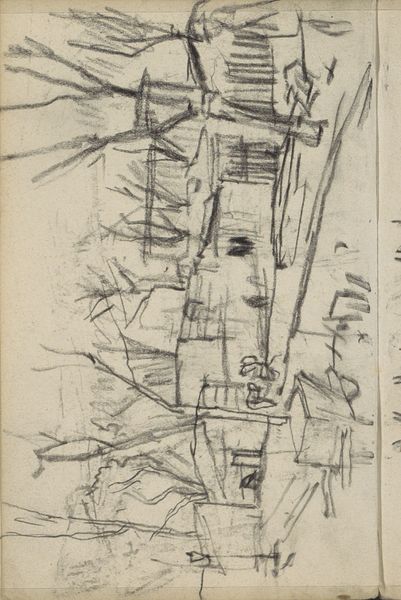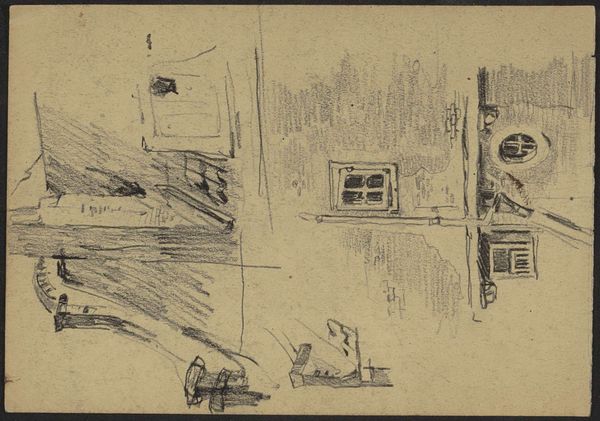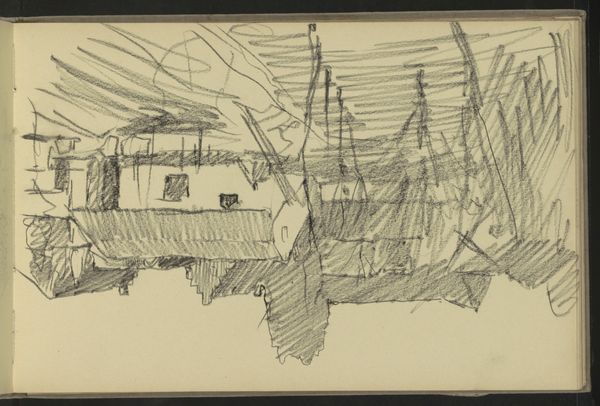
Gezicht op de poort van de molen Rijn en Lek te Wijk bij Duurstede Possibly 1906 - 1909
0:00
0:00
drawing, graphite
#
drawing
#
pen sketch
#
landscape
#
graphite
#
realism
Copyright: Rijks Museum: Open Domain
This sketch of the mill Rijn en Lek at Wijk bij Duurstede was made by Willem Witsen with a graphite pencil. Notice how the mill is rendered: stark, solid, and monumental. The mill isn't just a structure, but a symbol. Consider how throughout history the mill is depicted as the lifeblood of communities, the embodiment of labor and agricultural industry. Think of Dutch Golden Age paintings, where windmills populate serene landscapes, or even further back to medieval tapestries depicting agrarian life. Yet, Witsen presents us with a lonely, looming structure. This portrayal echoes the Romantic era's fascination with ruins. The subconscious association with time's passage, the fleeting nature of existence, and the inevitable decay of human endeavor. Observe how the image is inverted, further disorienting the familiar scene. This distortion creates a sense of unease, perhaps reflecting anxieties about industrialization encroaching on the pastoral idyll. It is a symbol constantly re-evaluated and re-contextualized through the lens of societal change and individual experience.
Comments
No comments
Be the first to comment and join the conversation on the ultimate creative platform.
